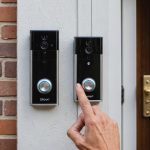Overview of Seamless Living
Seamless living embodies the effortless integration of technology into our daily lives, allowing for a harmonious existence where devices work collectively with minimal human intervention. Central to this concept are voice assistants, which serve as pivotal components in smart home integration by facilitating communication between different devices and the user. By employing voice assistants, individuals can control and manage their home’s functions via simple verbal commands, epitomizing the essence of convenience and efficiency.
The significance of seamless living lies in its capacity to transform routine tasks into automated processes, enabling users to dedicate more time to personal pursuits and less to operational hassles. Notably, combining voice assistants with smartphone-controlled systems amplifies this effect. Users can alternate between verbal commands and smartphone interfaces, providing flexibility and allowing for optimum control over home environments.
Also read : Unlock Your Device’s Potential: Top Strategies for Organizing Mobile Apps Efficiently
Moreover, smartphone management systems enhance this synergy by offering remote access and monitoring capabilities. Whether turning off lights from afar or scheduling heating adjustments, these applications ensure users remain connected to their home ecosystem. The integration of voice assistants and smartphones fosters a connected lifestyle, promoting an advanced level of comfort, security, and efficiency that defines true seamless living.
Innovative Strategies for Integration
Seamless integration of voice assistants within smart home systems begins with understanding effective voice integration strategies. A step-by-step approach not only streamlines the process but also maximizes system efficiency. Begin by identifying the smart home devices you wish to integrate, ensuring they are compatible with your chosen voice assistant. Compatibility is crucial for allowing smooth interoperability, facilitating a truly interconnected environment.
Also to discover : Maximize Your Smartphone’s Potential: A Comprehensive Guide to Smart Home Automation and Scheduling Mastery
The next step involves navigating the technology solutions available to enhance functionality. For instance, many platforms offer specific apps to link devices, which enhance control and offer real-time monitoring. These technology solutions play a critical role in creating a cohesive system that functions harmoniously.
Once devices are interconnected, following best practices is essential for maintaining a unified smart home environment. Regular updates and security checks ensure that your system remains current and secure. Moreover, tailoring settings to suit personal preferences—such as setting routines for daily operations—optimises efficiency while providing users with personalised convenience.
Implementation of these strategies allows users to experience the full potential of their smart home systems. By establishing a thorough integration process, individuals can enjoy enhanced interoperability, offering a seamless technological experience in everyday life.
Compatible Devices and Platforms
Integrating voice assistants with compatible devices is pivotal for achieving true seamless living. You’ll find various voice assistants such as Amazon Alexa, Google Assistant, and Apple Siri, each with unique capabilities tailored to enhance smart home automation. For example, Alexa excels with its extensive range of smart home skills, allowing users to manage lights, thermostats, and security systems effortlessly.
Popular Voice Assistants and Their Features
Choosing a voice assistant involves considering features like smart speaker compatibility, regional language support, and available third-party apps. Google Assistant is heralded for its superior natural language processing, making it a highly intuitive choice for users seeking fluid interaction. Meanwhile, Siri continues to integrate seamlessly with Apple devices, offering a robust ecosystem for iOS users.
Smartphone Management Applications
Smartphone apps play a crucial role in the management of smart home devices. Apps such as Samsung SmartThings and Apple Home allow users to control multiple devices through a unified interface, ensuring streamlined operations. These apps often provide remote monitoring capabilities, allowing for real-time updates on home activities regardless of location.
Smart Home Devices to Consider
To maximise efficacy, consider integrating smart home devices like Philips Hue lighting, Ring doorbells, and Nest thermostats. These are renowned for their compatibility with leading voice assistants, offering enhanced performance and control.
Optimizing User Experience
Enhancing the user experience in a smart home involves understanding how to utilise voice commands effectively. Voice assistants serve as powerful allies when optimising home automation, but to maximise their potential, precise phrasing is beneficial. For example, using specific, clear commands like “turn on the kitchen lights” ensures accurate and swift responses.
Customisation allows users to tailor voice assistant responses to fit personal preferences. Adjusting settings for voice recognition can result in more fluid conversations and efficient task execution. For instance, teaching your assistant to recognise different household members ensures personalised interactions and responses tailored to individual needs.
Routine management is crucial for maintaining seamless interactions within smart homes. Setting up routines—like morning rituals for adjusting lighting and temperature—ensures consistent comfort. Automations tied to precise schedules further enrich the user experience, offering structure without manual input.
Consider exploring platforms that offer integrated routine suggestions, which learn from user habits over time. This not only streamlines daily activities but also enhances satisfaction with smart home integrations by removing mundane tasks. Ultimately, the key to smart home optimisation lies in thoughtful setup and ongoing adaptation, ensuring technology consistently meets user expectations.
Challenges and Solutions
Navigating the landscape of integration challenges in smart homes can be daunting, especially when dealing with various voice assistants. Common issues such as compatibility errors, poor connectivity, and outdated software can hinder seamless operation. Identifying these hurdles is crucial to maintaining a fluid home automation experience.
When faced with such challenges, effective troubleshooting is essential. Start by ensuring all devices and software are up-to-date, as manufacturers frequently release updates to enhance functionality and security. Verifying consistent internet connectivity and proper device placement can also significantly affect performance. If problems persist, consulting device-specific forums or customer support can provide specific solutions tailored to your setup.
Emerging technology solutions are addressing these challenges and paving the way for future trends in smart home integration. Developments in AI-driven voice assistants promise to offer adaptive learning, making devices smart enough to predict user preferences and automate routine tasks without direct input. This evolution holds the potential to minimise manual troubleshooting efforts and elevate the user experience profoundly.
Advancements like these illustrate an ongoing commitment to refining the functionality and reliability of automation systems, ensuring users can fully embrace the benefits of truly seamless living.
Expert Opinions and Case Studies
Incorporating voice assistants into smart home systems can transform the way we live, but achieving successful integration requires careful strategizing. Industry experts emphasize attention to detail in planning and execution. Their expert advice focuses on understanding both the capabilities and limitations of your chosen technology solutions.
Insights from Industry Experts
Experts highlight the necessity of seamless connectivity between devices. They recommend prioritizing compatible devices to ensure smooth function across the system. Additionally, they suggest keeping systems updated to take advantage of emerging technology insights.
Successful Integrations in Practice
Case studies provide real-world examples of effective voice assistant deployment. For instance, a household that integrated Amazon Alexa achieved seamless control over lighting and security through strategic device selection and routine setup. This showcases the practical benefits of combining expert strategies with everyday usage.
Lessons from Early Adopters
Early adopters of smart home systems often encounter challenges but also provide insightful lessons. They emphasize the importance of understanding user-specific needs and preferences. Their experiences underline the significance of continuous learning and adaptation in enhancing the user experience and maximizing technology’s potential.





